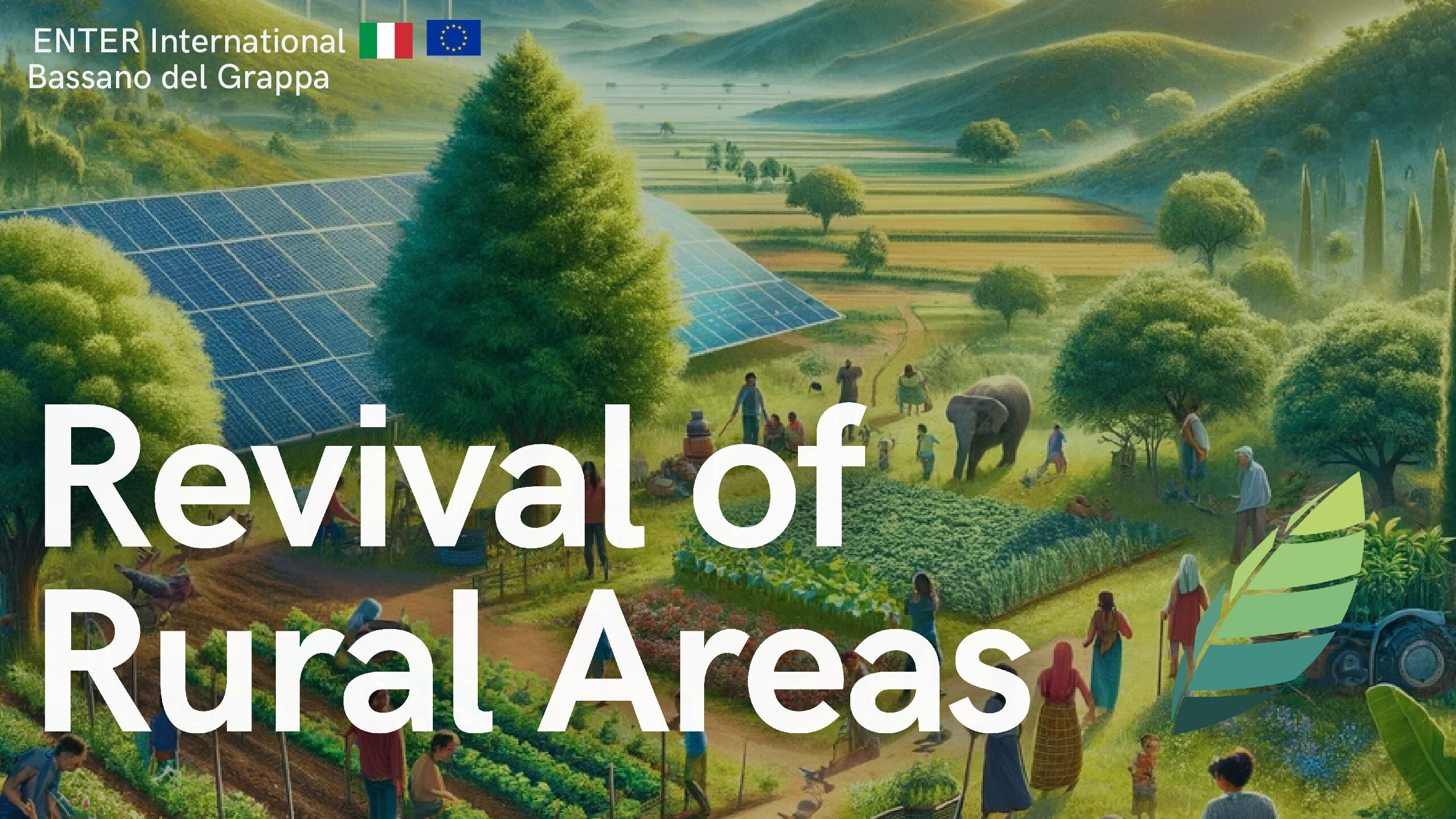Biodiversity reduction, increased frequency of wildfires, droughts, extreme temperatures, pollution, and a long list of commonly known climate change effects also constitute a consequence and cause of depopulation. Climate change and depopulation are linked, they feed back each other, and result in a fatal combination for rural areas.
The main characteristics of this vicious circle are the following:
- Migration. As people move to the city, the countryside gets empty, wilder, and uncontrolled. This results in a boost of fauna and flora, which is good, except for the fact that mixed with extreme temperatures provokes vast wildfires. This rural exodus is also related to other fatal climate change causes, such as an increase of industry and pollution, and higher consumerism result of higher salaries and new lifestyles.
- Extreme temperatures and desertification, which makes it difficult for the agri-food industry to survive without economic aids.
Within Europe, the Mediterranean countries are the most touched by this arid climate, but many countries have been affected by this exodus trend during this past century and are trying to mitigate it with diverse actions and policies. As shown in the map below, Spain is one of the most afflicted states. But what is Spain doing about it?
Rural Population in Europe. Source: Reddit, 2021. This image is not owned by ENTER International the intent is purely educational.
Since Spain suffered its massive rural exodus in the late 60s, the cities have been overcrowded and the climate change has been remarkable. Even tough Spain has seen a prominent population growth of 15% in the last decade, around 29% of the rural territory is exposed to high rates of depopulation, 45% to aridity issues, and 17.5% to both.
Municipalities that lost population in the last decade (2010-2019). Source: Ministry of Ecological Transition and Demographic Challenge. This image is not owned by ENTER International the intent is purely educational.
There are local political parties confronting this dilemma, such as “Teruel Existe”, which defines itself as “the citizen movement that fights for the survival of the province of Teruel”, for “equal opportunities no matter where you live”, and for “territorial balance” within Spain.
In addition, many regional policies and incentives have been applied from diverse political parties, such as the following:
- The state program for the Universalization of Digital Infrastructures for Cohesion – Bandwidth, also funded by the EU (NextGenerationEU), that pretends to achieve a complete digitalization within the whole Spanish territory, bringing quality internet to every town and village, by 2025. This can be a truly attractive policy nowadays, considering the increasing amount of people working from home, and the general digitalization increment within any business.
- Incentives such as monthly payoffs, housing grants, tax cuts or loan options. There are villages offering money just to live in it. As people live, they consume and help it survival, or even growth.
- Sustainable tourist destinations in rural areas, which is also associated with the recovery of heritage and dissemination of cultural projects.
These are just some relevant examples that can be found within the “130 Measures to address the Demographic Challenge” promoted by the government since 2021. The triumph or failure of these policy books will be discovered in the upcoming years, but this shouldn’t mean additional changes can’t be made in the meantime.
There is a need for a mindset change. To recover the rural life, education should be improved to address this issue. Schools should teach to value the environment and the need for diversification. Show how people leaving the countryside means empty houses (while homeless people live in the cities), how the rural exodus ends up in an increased and excessive urbanization, more consumerism, and the abandonment of agricultural, livestock, and forestry activities, amongst others. And how the lack of diversification leaves most Spanish people with less employment opportunities and a more difficult access to basic needs.
However, addressing this issue requires not only educational improvement but a multifaceted approach that also combines, for instance, infrastructure development and community-focused initiatives. Investing in transportation infrastructure, such as the expansion of train and bus networks, makes rural areas more accessible and attractive for potential residents. Alongside this, promoting local businesses, educational institutions, and healthcare services in rural areas can create a more sustainable and thriving community. Initiatives like affordable housing projects, cultural events, and recreational facilities contribute to an improved quality of life, making rural areas not only places of residence but vibrant and fulfilling communities.
In conclusion, depopulation is a major concern that should be treated with more priority, as it transversally affects society, industry, climate, and economy, among others. Good policy making helps setting up a good framework to work with, but the population should be keen to achieve it, or nothing will improve.

References:
Equipo BLOG Grupo Cajamar. (n.d.). Cómo influye el cambio climático en la despoblación. Blog del Grupo Cajamar. Retrieved from https://blog.grupocajamar.com/como-influye-el-cambio-climatico-en-la-despoblacion/
OpenKRATIA (n.d.) La MIGRACIÓN CAMPO – CIUDAD en la ESPAÑA de los 60s. Retrieved from http://openkratia.blogspot.com/2013/08/la-migracion-campo-ciudad-en-la-espana.html
Reddit. 2021. Rural Population in Europe. Retrieved from https://www.reddit.com/r/europe/comments/li68fk/rural_population_in_europe/
Vicepresidencia cuarta y Ministerio para la Transición Ecológica y el Reto Demográfico. Secretaría General para el Reto Demográfico. (n.d.). El reto demográfico y la despoblación en España en cifras. Retrieved from lamoncloa.gob.es
A, González Rueda. El Español. December 20, 2022. La despoblación y el cambio climático coexisten e interactúan. Retrieved from https://www.elespanol.com/sociedad/20221220/despoblacion-cambio-climatico-coexisten-interactuan/725427725_0.html
Teruel Existe. 2023. Main page. Luchando por la igualdad de oportunidades. Retrieved from https://teruelexiste.info/
Gobierno de España. Ministerio de Asuntos Económicos y Transformación Digital. (n.d.). Programa de Universalización de Infraestructuras Digitales para la Cohesión – Banda Ancha. Retrieved from https://portalayudas.mineco.gob.es/InfraestructurasDigitales/Paginas/Index.aspx
Heraldo-Diario de Soria. February 14, 2023. Se inicia el despliegue de fibra óptica en los 46 municipios de Soria incluidos en el Plan UNICO 2022. Retrieved from https://heraldodiariodesoria.elmundo.es/articulo/soria/inicia-despliegue-fibra-optica-46-municipios-soria-incluidos-plan-unico-2022/20230214193239354887.html
Housfy blog. March 8, 2022. ¿Cuáles son los pueblos que ofrecen trabajo y vivienda? Retrieved from https://housfy.com/blog/pueblos-ofrecen-trabajo-vivienda/
Gobierno de España. Ministerio para la Transición Ecológica y el Reto Demográfico. (n.d). 130 Measures to address the Demographic Challenge. Retrieved from https://www.miteco.gob.es/es/reto-demografico/temas/medidas-reto-demografico/
